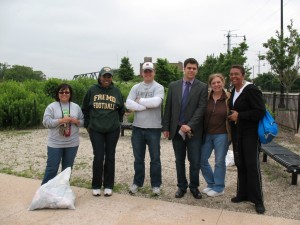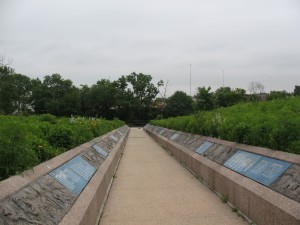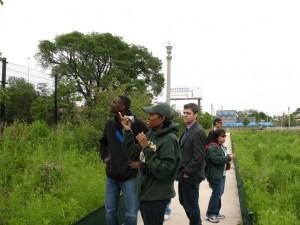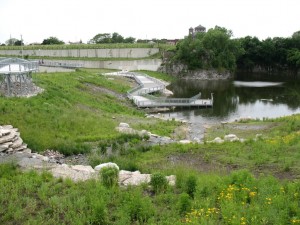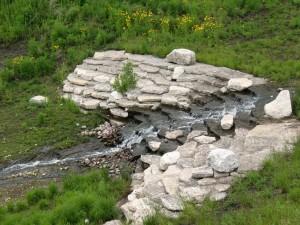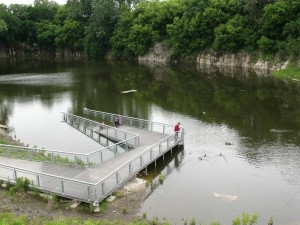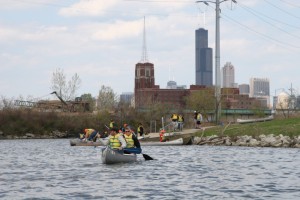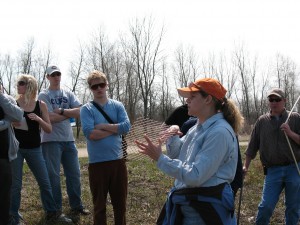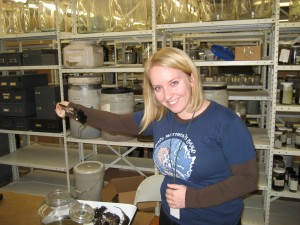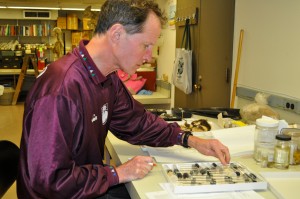Tomorrow I head down to Bloomington, Indiana, to participate in one of my favorite professional conferences — the biannual meeting of ASLE, the Association for the Study of Literature and Environment. As a scholar whose work straddles the humanities and natural sciences, and as someone teaching in RU’s newly-developed Sustainability Studies program, I’m always delighted to attend this energetic and intellectually-stimulating gathering of writers, teachers, scholars, artists, and activists. All of them are committed to advancing the cause of environmentalism, but from a myriad of perspectives and methods. Plus, we always manage to take a good field trip or two in between the formal conference proceedings.
This year’s ASLE meeting is hosted by Indiana University, and my journey this week will mark my first visit to that university as well as to Bloomington — another reason I’m looking forward to the adventure.
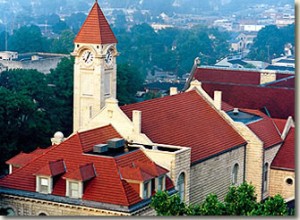
I’m very familiar with the “other Bloomington” of the Midwest — the one in Illinois where I went to college at Illinois Wesleyan University and which I still visit periodically with my family — but I’ve always had a notion to see this much-touted community that was the setting for the wonderful 1979 film, Breaking Away.
I’m taking part in a roundtable-style panel entitled “Sustainability Education: Multidisciplinary Perspectives and Approaches” that includes faculty participants from colleges and universities all across the US. My fellow panelists are presenting on topics ranging from teaching sustainability and literature in Appalachia, to designing interdisciplinary courses on climate change, to the creation of a sustainability blog that showcases student writing and art, to exploring ways in which sustainability can be infused throughout the general education curriculum for undergraduates.
My own presentation focuses on the new Sustainability Studies (SUST) program here at Roosevelt University. The program grew out of an experimental course on urban sustainability I team-taught back in the spring of 2009, an experience described in an essay from the July 2010 issue of Metropolitan Universities. As a new undergraduate degree housed in Roosevelt’s College of Professional Studies, the nascent SUST program just finished its third semester and has approximately 25 majors enrolled at Roosevelt’s two campuses (Chicago and Schaumburg, IL) and taking online courses. The curriculum’s core is a series of interdisciplinary courses that integrate the natural and social sciences with the humanities and address key issues and themes such as water; food; waste; biodiversity; energy and climate change; sprawl and transportation; and policy and ethics.
Three things strike me about our program as relevant to this panel’s discussion of sustainability education. The first is the institutional context in which our program emerged at RU, since many colleges and universities are considering ways to incorporate sustainability into their curriculum, whether as new ways to teach existing courses or in the shape of new courses and/or programs. In our case at Roosevelt, the university had some “vacant land” within the undergraduate curriculum which provided us with an opportunity to propose and develop this new major. While RU has well-established programs in biology and chemistry, there were no majors in environmental policy, studies, or science. My home college has an entrepreneurial orientation, and thus the development of the SUST curriculum received strong in-house support from our dean. It was favorably received by university-wide faculty committees, as well, in part because we took pains to show how the program was meant to complement existing science programs, rather than compete/conflict with them. By developing solid cross-college relationships with faculty colleagues in biology, chemistry, environmental science, math, and business, we hope to engage in future collaborations on many levels. One promising example of this is that SUST faculty were invited to participate in the current revamping of RU’s environmental science minor.
A second observation is how sustainability education contributes to an institution’s overall work to improve its physical operations and thus serve as a model of a sustainable community (a process I describe in my “Sustaining Sustainability” essay circulated previously). We at RU are behind many other US colleges and universities (such as Dickinson College, as chronicled by Professor Ashton Nichols), but we have become galvanized recently around a common goal of improving the sustainability of our two campuses and connecting this improvement as much as possible to our teaching, research, and service-learning activities. In this respect, sustainability education — whatever form it takes in a particular institution — can be an powerful force in getting people (from college administrators to alumni to community members) to see the ethical importance and economic benefits of reducing resource use, reducing waste, recycling materials, conserving water and energy, fostering local food production, and educating eco-literate citizens.
Lastly, there’s the transformative potential of technology, field experiences, and service-learning for sustainability education, all of which are exciting areas of inquiry and experimentation that can revitalize our teaching and stoke the inherent enthusiasm we’ve observed in our students for the ideas and practical applications of sustainability. In line with the College of Professional Studies’ tradition of serving adult / non-traditional learners (quite often parents juggling work, family, and school), we use technology to offer courses in a mix of formats — face to face, fully online, hybrid, and weekend — a course delivery approach which, though challenging to manage, greatly increases student access to our program. Just as significantly, our Sustainability Studies @ Roosevelt University blog, authored and maintained by my colleague Carl Zimring, serves triple duty as a teaching resource, marketing tool, and go-to news source about environmental issues impacting the Chicago region.
Another key feature of the SUST curriculum is its emphasis on field experiences to supplement classroom and online instruction. In my SUST 210 Sustainable Future and SUST 220 Water courses, as well as other classes, I take students out to various sites in the city and suburbs where they can talk with experts, gather and analyze empirical data, examine innovations in sustainable design and planning, and engage community members in environmental/social justice issues. Recent field trip sites have included the Chicago Center for Green Technology, the Field Museum of Natural History’s zoology collection and laboratories, the Chicago Wilderness “Wild Things” biannual environmental conference at University of Illinois at Chicago, the Chicago River, and local nature preserves and restoration sites. Many students describe these trips as powerfully transformative experiences that introduce them to places they never knew existed, educate them about social and environmental problems in a way no course reading or lecture could, and dramatically shift their perceptions about the status and potential of urban natural resources.
Closely connected to these field experiences are the service-learning activities we are currently engaged in as well as planning for the future. These run the gamut from students in our SUST 330 Biodiversity class working side-by-side with Field Museum scientists analyzing data and cataloguing specimens, to SUST 230 Food students contributing their labor to local urban farms. Service-learning is the explicit focus of SUST 350 Service & Sustainability, a course I will debut next spring as “Urban Farming, Community Development, and Social Justice.” Students here will learn about one of the most important components of sustainability, food production and consumption, in the context of urban neighborhoods and ecosystems. By doing hands-in-the-dirt labor at the Chicago Lights Urban Farm operation in Chicago’s Cabrini-Green neighborhood, they will gain direct knowledge of modern organic/urban agricultural systems as well as learn about pressing urban social justice issues such as food deserts, gentrification, pollution, environmental racism, and persistent poverty.
